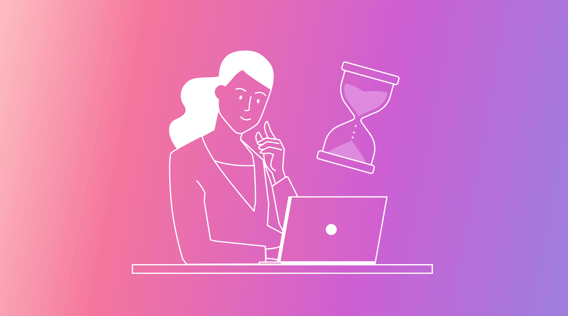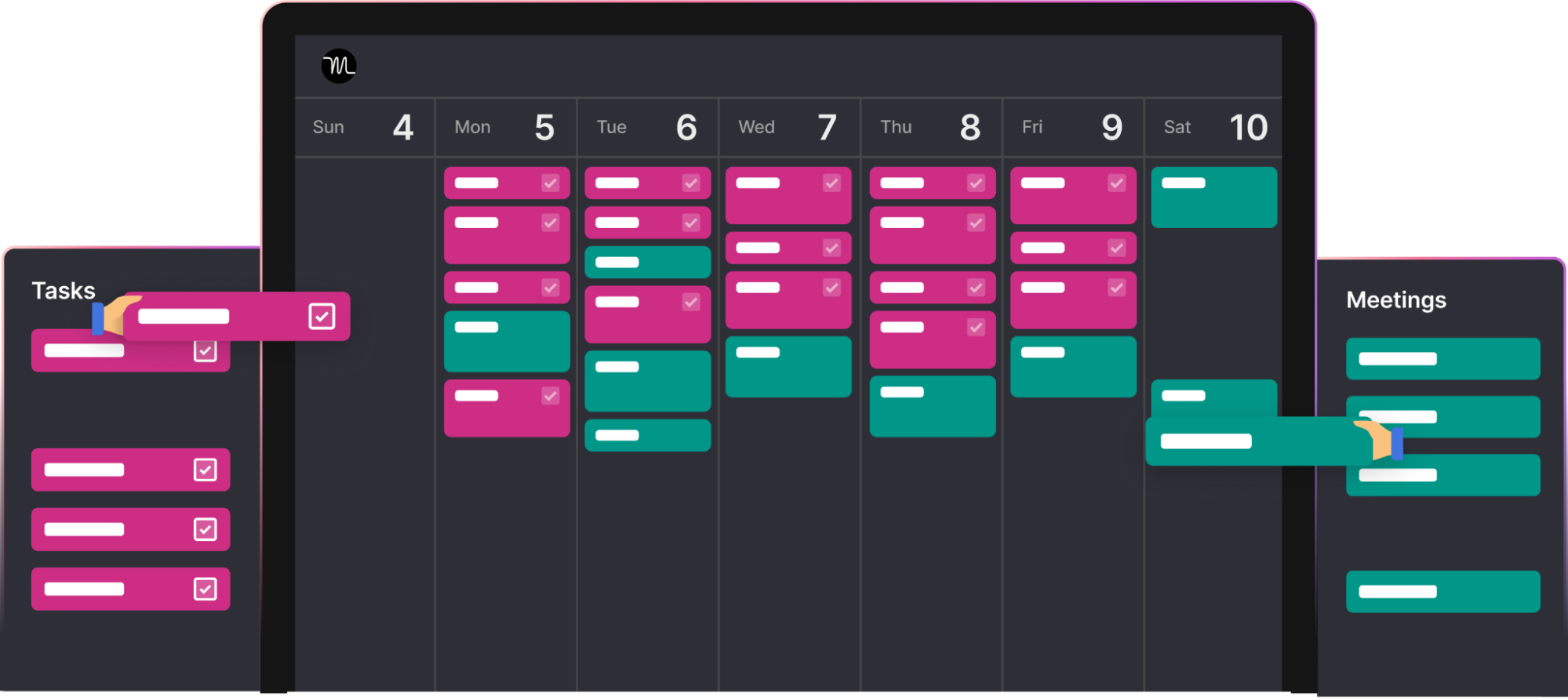In today's digital age, it almost feels like we're experiencing the whole world through a screen. The average person spends upwards of 40% of their waking hours on internet-connected devices — and that doesn't include the hours they spend on screens for work!
Life is slipping away as more is demanded of our time.
It's time for a digital detox.
This article will help you make sure you're only doing essential tasks online so that you can immerse yourself in real life (IRL).
What do we mean by “screen time”?
Before we get into our top tips for breaking that on-screen habit, let's define what we mean by "screen time."
Screen time refers to the number of hours per day a person spends using electronic devices.
Excessive screen time involves prolonged and frequent use of screens, leading to negative health effects like poor sleep, lackluster concentration, and irritability.
 |
Dopamine, triggered by screen-related activities, contributes to the addictive nature of screen time.
Just like eating copious amounts of chocolate or smoking cigarettes, your tolerance increases, requiring you to get more and more screen time and validation to experience that same dopamine fix. And this can have all kinds of negative effects on not only how you work but also how you feel.
It’s time to break this cycle. But first, you need to get a good grasp on where your time is going.
Where is all your screen time going?
Just like with your spending, if you're not tracking where your time goes, it's hard to quantify just how much time you waste on digital activities. While these activities might feel good at that point in time, they're eating away at living in the moment.
Here are just some of the ways screen minutes can add up:
- Video games: playing hours of immersive and interactive games.
- Binge TV streaming: Getting hooked on entire seasons or shows through streaming platforms.
- Doom-scrolling on social media platforms: Mindlessly spending time scrolling on social media apps, often leading to negative feelings after comparisons with others.
- YouTube videos: Learning new skills or gaining how-to knowledge, from cooking to car repair, by watching videos online.
Why do you need to cut back?
You might think, "But it's so convenient to do everything online."
While this might be true, consider the negative effects of screen time on your overall health. Here are just a few of them:
- Reduced sleep quality: Excessive screen time impacts sleep quality by disrupting the body's natural sleep-wake cycle.
- Poor mental health: Prolonged screen use can negatively affect mental well-being, leading to increased stress and anxiety.
- Technology addiction: Excessive screen exposure can strain your relationship with technology, leading to dependency and isolation.
- Decreased physical activity and overall health: Screen time often correlates with reduced physical activity, negatively impacting physical health.
- Burnout: When you feel like you can never get away from work or social interaction, you can't reset and properly rest. This often leads to burnout.
 |
So how many on-screen hours is healthy?
While there are no specific time limits to follow, it’s recommended that adults balance their screen time with other activities, like physical exercise, social interactions, work, and relaxation, to maintain their overall health and well-being.
So, how do you break a screen-time habit?
3 steps for reducing your screen time
If it's time to cut back, you'll need a plan. Just like any activity that's become addictive, you'll need to take it one step at a time.
Here’s how to get started:
1. Review how much time you’re spending on a screen (and where)
Mobile apps and online extensions like the Freedom app can tell you how much time you're spending on each page or platform. They even allow you to block access to sites and apps for set times.
When you can see how much time you spend online, it's easier to adjust to doing more productive activities.
2. Figure out what you’ll replace screen time with
Now that you know where your time is going, consider the activities you want to be doing more of instead. Those could be more productive activities (more on that later) or active time. Even a quick workout will give you an energy boost to help you power through the day (but stay away from a TV).
3. Plan your day in advance, including your screen time limit
If you need to be online for work often, the key is to make sure you’re spending this time wisely. If you’re spending five hours of each workday scrolling on Facebook and X (formerly Twitter), then that’s a problem.
Schedule your day in advance so that you can simply log on and know that you’ve already arranged everything you need to get done.
A lack of email interruptions and social media notifications could also mean that your work tasks take a lot less time than usual.
6 productive ways to cut out screen time
So, you’ve improved your focus. Great! Now, here are 6 ways you can reduce your screen time while also improving your work and personal relationships:
Deep focus time
You've figured out where your lost (screen) time is going and, instead, blocked out some defined, heads-down focus times, but how do you make sure you focus when you need to?
Try the Pomodoro Technique.
Within your scheduled time block, work in short sprints of 25 minutes each, followed by a 5-minute break. After three or four of these 30-minute blocks, take a longer break of 15 minutes. This will allow you to focus while also keeping you fresh. The short sprints will pass by really quickly, and before you know it, you'll be flying through your tasks without even thinking about social media or other distractions.
Micro-learning
Swap TikTok scrolling for skill-building.
Enroll in courses or tutorials to acquire new skills, like bookkeeping, marketing, or sales training, to help you improve at your job.
You can find free courses through your local library. Even if the courses are only available online, you'll be taking an active role in your development with this screen time.
Talk with others
If you’re ducking out for a coffee anyway, why not bring a little connection back into your client relationships by pairing that up with a quick in-person catch-up or phone call?
Not only will this get you away from screens, but you’ll be helping the other person do so as well (they can thank you later).
Take a walk
Go for a walk and brainstorm solutions to any sticky problems you might be having. You'll be amazed at how much more creative you can be away from a screen.
And speaking of phone calls and talking with others (see the previous point), you could make your calls while walking or listen to those podcasts that you've saved on Spotify but haven't yet had time to listen to.
Read
Pick up that book, industry journal, or newspaper. You can even use an e-reader, which offers matte pages, with white instead of blue light, and no notifications to distract you.
Know that reading from paper pages engages a different part of the brain than reading something on a screen.
If you've got a "to be read" (TBR) list staring at you from your bookshelf, then it's time to get started!
Journal
Sometimes, we doom-scroll on social media rather than facing the things that are bothering us.
Prioritize your productivity and mental health with a valuable tool for goal-setting, clarity, and learning more about yourself. Grab a blank notebook and scribble without thinking. Julia Cameron’s The Artist’s Way has great techniques for stream-of-consciousness writing that can help you figure out what you really want — but without comparing yourself to others.
4 more tips to get you out in the world right now
It's hard enough to go screen-free for those who only use their screens in their leisure time — so if you're someone who also works on a screen all day, you might be feeling like there's no escape from it.
Fortunately, there are tactics to help.
Here are four things you can do right now to break your on-screen habits and get you back out in the world:
Set a screen time limit
- Establish specific boundaries for your screen use to free up more time for real-world activities.
- Don’t be too strict in the beginning because that’ll make you more likely to give up. Make sure to schedule some screen time for the things that you enjoy. Just balance it with your other tasks.
- Dedicate time blocks for screens and actively manage and reduce this time to encourage more engagement in your relationships and local community. For example, watch one episode of a show rather than binge the whole season. This will draw out the enjoyment, and you’ll actually feel engaged in it.
Schedule activities that’ll get you away from screens
- Plan and commit to activities that don’t involve screens.
- Whether it’s enjoying a massage, taking a walk, or meeting a friend for coffee, block out time in your schedule to make sure you prioritize these experiences.
- We challenge you right now to book one thing that can’t be canceled. Go on!
Sleep with your electronic devices in another room so that you can focus better the next day
- Using your phone as an alarm can be convenient; however, it’s difficult to break a screen habit when your phone is always within reach.
- Blue light exposure before bedtime can delay sleep onset and reduce overall sleep quality.
- Bedtime features on your phone can remove that color and block certain apps during sleep hours so you can get that much-needed shut-eye without interruption.
Set up your work life to manage tasks and time without you
- While you're out in the world, let AI-driven smart scheduling software help you manage your time.
- Implement systems and strategies that'll allow your work life to function without constant involvement.
- Delegate tasks, set clear priorities, and create a structure that allows for effective task management even when you're away.
Let Motion manage your time for you so you can get offline and get out into the world.
Cut down on screen time with automated task scheduling
While it might not be reasonable to go completely screen-free in today’s online world, it is possible to cut back on excessive screen time.
We’ve given you some creative ways to limit your screen time outside of work hours. Let Motion handle your online time at work.
With Motion managing your day, you can make sure that you only have to be online for productive reasons. And when you’re at your computer, your work time is completely focused.
Cut back on the tasks that keep you stuck at a screen for a more balanced digital life. Try Motion for free today.







